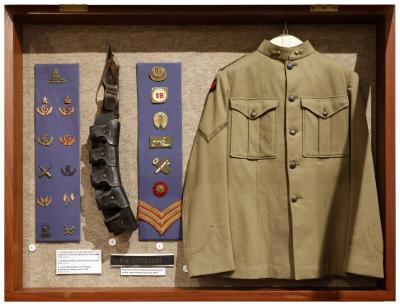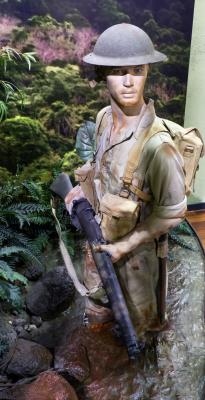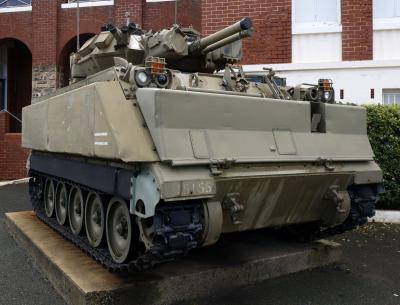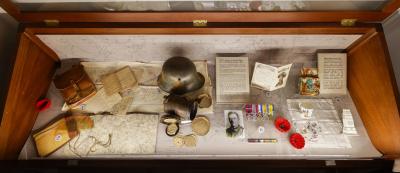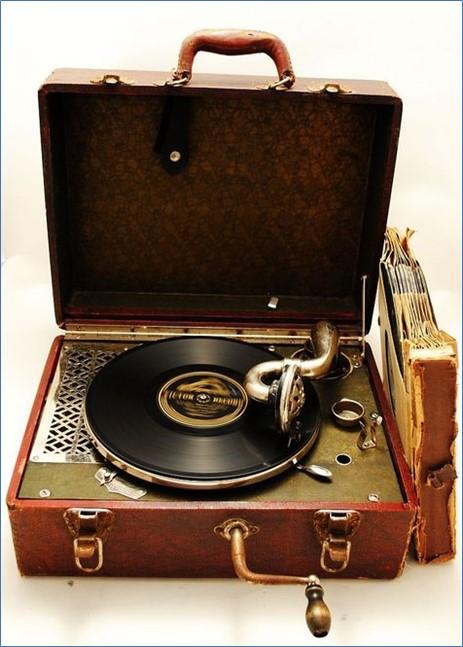World War 2, Home Front Technology Context - 78 RPM Record
Contextual object to introduce World War 2 Gallery - 78 RPM Record
Any flat disc record, made between about 1898 and the late 1950s and playing at a speed around 78 revolutions per minute is called a "78" by collectors. 78s hold about five minutes of music. Generally, 78s are made of a brittle material which uses a shellac resin. If dropped, the record would likely shatter.
78s came in a variety of sizes, the most common being 10 inch (25 cm) and 12 inch (30 cm) diameter, and these were originally sold in either paper or card covers, generally with a circular cutout allowing the record label to be seen. Relatively limited information is provided by the items themselves due to the label size.
"Record albums" were originally booklets containing collections of multiple disc records of related material, the name being related to photograph albums or scrap albums.
His Master’s Voice and Decca were major producers of 78s. Al Jolson and Donald Peers were popular artists of the era.
It was not until the LP era that an entire album of material could be included on a single record.
Details
Details
This object is in the Entrance of the World War 2 Gallery at the Australian Army Museum of Western Australia.
Australian Army Museum of Western Australia
Australian Army Museum of Western Australia
Other items from Australian Army Museum of Western Australia
- World War 2, Rats of Tobruk Memorial Casket, 2002
- World War 2, Diorama Mannequin, Defence of Crete, Digger, 1941
- World War 2, Diorama Mannequin, Capture of Crete, Fallschirmjaeger, 1941
- World War 2, Mannequin Diorama, Kokoda Trail, 2/16 Battalion, 1942 (1 of 3)
- World War 2, Mannequin Diorama, Kokoda Trail, 2/16 Battalion, 1942 (2 of 3)
- World War 2, Home Front Technology Context - Portable Typewriter
- Inter-War, Western Australia, Fremantle, Garrison Artillery, 1938
- World War 2, Mannequin Diorama, Kokoda Trail, 2/16 Battalion, 1942 (3 of 3)
- Medium Fire Support Vehicle / Medium Reconnaissance Vehicle
- Pre 1914, Medals Display, British Colonial Wars
- World War 1, Western Front, Last 100 Days Display, 1918


